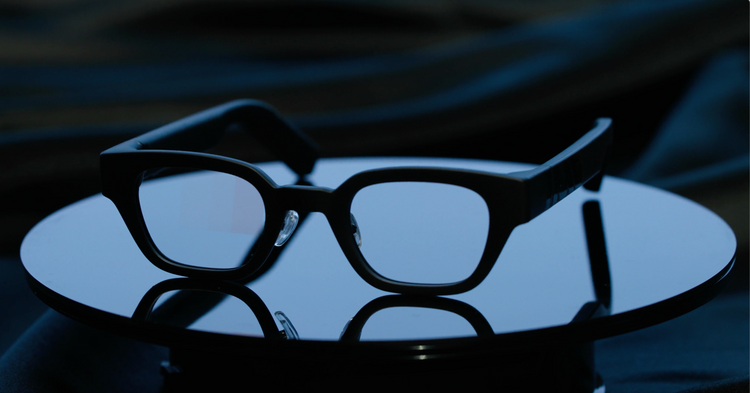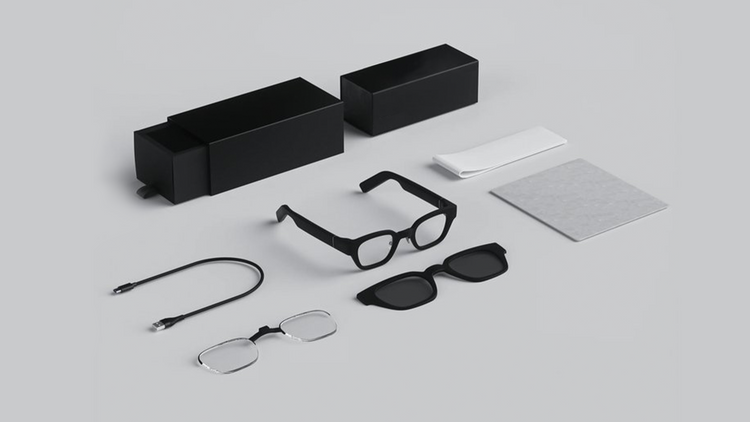
Table of Contents
- Introduction
- The Evolution of Real-time Captioning Glasses
- How Speech-to-Text Glasses Work
- Key Benefits of Wearable Captioning Devices
- HearView Glasses: Leading the Industry
- Empowering the Deaf and Hard-of-Hearing Community
- The Future of Subtitle Glasses
- Conclusion
- Frequently Asked Questions (FAQ)
Introduction
With advancements in technology, real-time captioning glasses are revolutionizing the way individuals who are deaf or hard-of-hearing interact with the world. These speech-to-text glasses would be able to provide instantaneous subtitles so that people could read what others were saying without delay. Product innovation, such as the Hearview glasses, is leading this transformation and offers completely new opportunities for accessible communication. This article delves into the features, benefits, and future of these wearable captioning devices, as well as their impact on the community.
The Evolution of Real-time Captioning Glasses
Captioning glasses are one of the biggest releases in recent assistive technology developments, hailing improvements in communication accessibility in people who are deaf or hard of hearing. The technology started with a simple idea of improving live event accessibility, but its scope has grown considerably in recent years. Other companies, like Hearview, integrate speech-to-text glasses using AI for seamless speech-to-text functionalities in day-to-day life and make life much easier for their users across a range of situations.
According to a report by Business Insider, the Hearview glasses upend the game of communication: they translate spoken words into captions directly onto the glasses, allowing one to understand and respond in real time-something that has proven invaluable during group discussions, meetings, and gatherings.
How Speech-to-Text Glasses Work
The principle behind speech-to-text glasses is both simple and sophisticated. These glasses pick up spoken language through the microphone of your smartphone, processing it via advanced AI algorithms into live captions. The resulting captioning shows right on the lenses so one can read along with the conversation as it happens.
The Hearview glasses pick up voices accurately with very slight latency, thanks to AI-powered speech recognition. In this way, this technology enables users to watch subtitles in real-time, just like movie-watching. In particular, it is useful for listening comprehension in noisy environments or when several speakers are involved in the discussion.
Key Benefits of Wearable Captioning Devices
Wearable captioning devices, like the Hearview glasses, support deaf and hard of hearing in a variety of ways:
- Real-time Subtitles for Conversations: The ability to receive subtitles in real-time allows the perception and response to spoken language to be easier and more natural.
- Increased Independence: Users no longer need to rely on others for interpreting or repeating conversations, which fosters a sense of independence and confidence.
- Versatility in Different Environments: Whether at home, in a business meeting, or in a classroom, these smart glasses for deaf individuals adapt to various settings, providing reliable captioning anywhere.
- Improved Quality of Life: With better access to communication, users can participate more fully in social and professional activities, thereby improving their overall quality of life.
HearView Glasses: Leading the Industry
With up to 95% speech-to-text accuracy, HearView Smart Glasses revolutionize how the deaf and hard-of-hearing community engage with each utterance of spoken words clearly and precisely captured. These glasses instantly provide real-time transcription, allowing users to follow the conversations without delay.
HearView glasses are designed to adapt to various accents, speech speeds, and intonations, guaranteeing reliable performance in diverse communication scenarios. Weighing just 52 grams, HearView glasses ensure all-day comfort, making them barely noticeable even with extended use. With advanced safety features that include customizable alerts, users can stay aware of their surroundings by detecting potential dangers such as honking horns or shouting.
Additionally, the long battery life of up to 7 hours ensures that the glasses provide reliable performance throughout the day. Overall, HearView Smart Glasses facilitate smooth and effective communication, making interactions more natural and inclusive for the deaf and hard of hearing community. Hearview presently remains at the forefront of the industry by ensuring a new benchmark in the field for subtitle glasses through the use of an advanced technology system.
Empowering the Deaf and Hard-of-Hearing Community
Real-time captioning glasses are surely going to have a far-reaching effect on the entire deaf and hard-of-hearing community. These gadgets will bridge the gap in communication, as it could take place without any need for an interpreter from a third party. The story of a Virginia Beach teenager whose Hearview glasses were stolen was reported by WTKR-a case that evinced just how important these devices are. It described such glasses as "life-changing" and just how such very crucial technology those who need it depend on.
For many, smart glasses for the deaf represent much more than a tool; they represent a means to be more part of this world. By providing captions for deaf and hard-of-hearing individuals in real-time, these glasses are enabling richer social connections, better educational outcomes, and improved professional opportunities.
The Future of Subtitle Glasses
The future of subtitle glasses looks great, as long as technology keeps improving. Even now, there are researchers and developers trying to make such devices more efficient with better battery life, speed of processing, and more sophisticated AI built into them. One development that might appear is the addition of some AR elements, which would give a more immersive feel to captioning.
With increased awareness, the demand for wearable captioning devices will also surge as people become more aware of the need for such technologies. Also, future updates may include advanced personalization options that can allow users to adjust subtitle size, position, and style according to their preference.
Conclusion
These Hearview glasses are part of a new generation of real-time captioning glasses that facilitate smoother conversations, further breaking down barriers in the deaf and hard-of-hearing community. Subtitles provided in real time through these speech-to-text glasses let users engage in smoother conversations, have access to information, and connect with others in ways that might have been difficult otherwise. Further, as technology continues to evolve, so does their great potential to make the lives of people even better. The journey into an inclusive world is well underway, with wearable captioning devices leading the charge.
Frequently Asked Questions (FAQ)
Q: How do real-time captioning glasses work?
A: Real-time captioning glasses use a smartphone's microphone to capture spoken language, which is then processed by AI algorithms to generate real-time captions displayed on the lenses.
Q: Is it comfortable to wear speech-to-text glasses for a long period?
A: Yes, most speech-to-text glasses are designed to be lightweight and comfortable, allowing users to wear them for extended periods without discomfort.
Q: What are the key benefits of using subtitle glasses?
A: Subtitle glasses provide real-time subtitles, enhance independence, and increase the quality of life by getting themselves fully involved in various social, educational, and professional activities.
Q: Where can I learn more about Hearview glasses?
A: You can learn more about Hearview glasses by visiting their official website at Hearview.ai.


